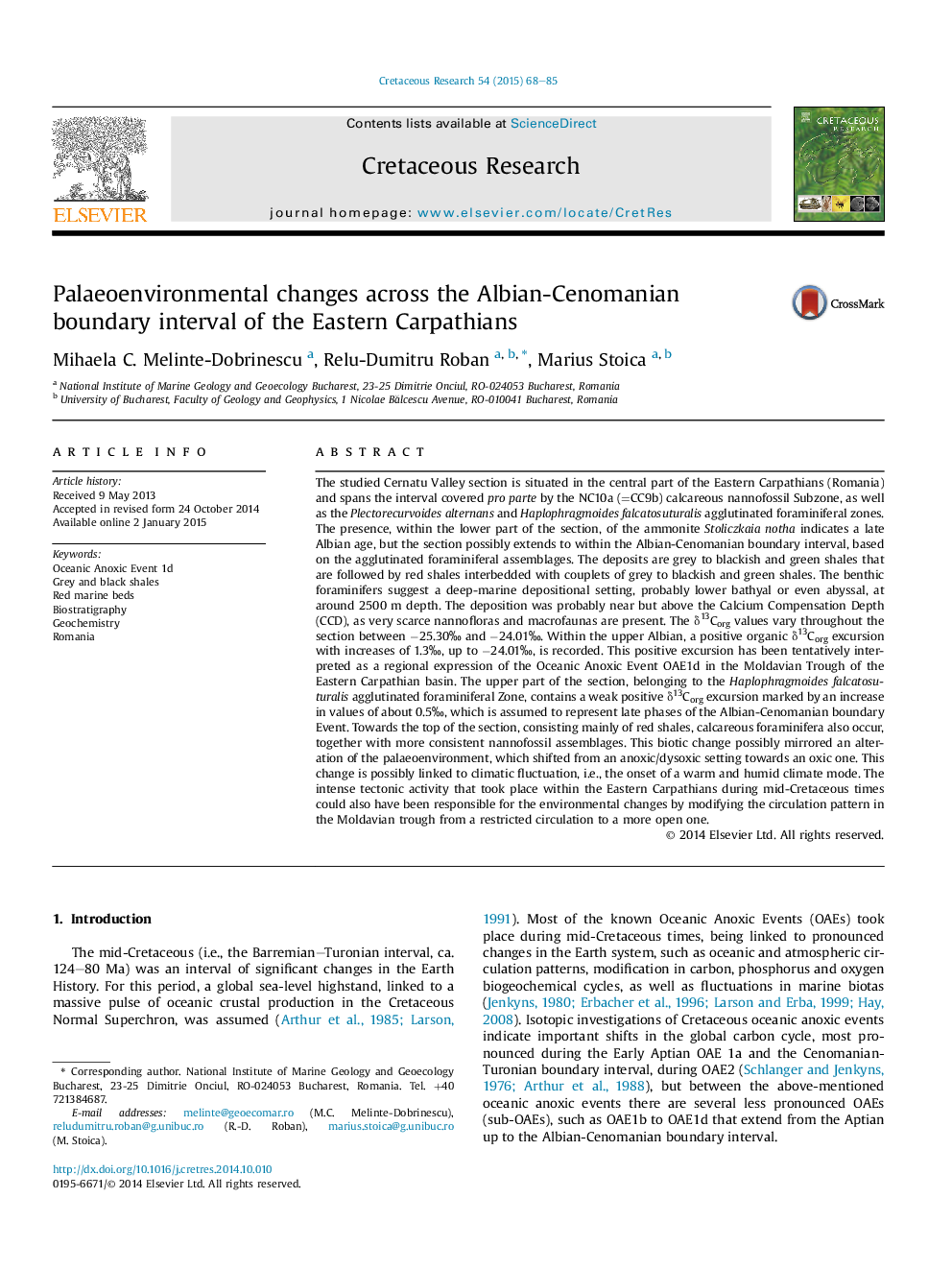| کد مقاله | کد نشریه | سال انتشار | مقاله انگلیسی | نسخه تمام متن |
|---|---|---|---|---|
| 4747094 | 1642069 | 2015 | 18 صفحه PDF | دانلود رایگان |

• We have investigated a late Albian – early Cenomanian deep-marine succession.
• Agglutinated foraminiferal taxa, as well as scarce nannofloras and macrofaunas are present.
• Foraminifer morphogroups and geochemistry were used as palaeoenvironmental change indicators.
• Late Albian δ13C org positive excursion is the expression of the OAE1d in the Eastern Carpathians.
The studied Cernatu Valley section is situated in the central part of the Eastern Carpathians (Romania) and spans the interval covered pro parte by the NC10a (=CC9b) calcareous nannofossil Subzone, as well as the Plectorecurvoides alternans and Haplophragmoides falcatosuturalis agglutinated foraminiferal zones. The presence, within the lower part of the section, of the ammonite Stoliczkaia notha indicates a late Albian age, but the section possibly extends to within the Albian-Cenomanian boundary interval, based on the agglutinated foraminiferal assemblages. The deposits are grey to blackish and green shales that are followed by red shales interbedded with couplets of grey to blackish and green shales. The benthic foraminifers suggest a deep-marine depositional setting, probably lower bathyal or even abyssal, at around 2500 m depth. The deposition was probably near but above the Calcium Compensation Depth (CCD), as very scarce nannofloras and macrofaunas are present. The δ13Corg values vary throughout the section between −25.30‰ and −24.01‰. Within the upper Albian, a positive organic δ13Corg excursion with increases of 1.3‰, up to −24.01‰, is recorded. This positive excursion has been tentatively interpreted as a regional expression of the Oceanic Anoxic Event OAE1d in the Moldavian Trough of the Eastern Carpathian basin. The upper part of the section, belonging to the Haplophragmoides falcatosuturalis agglutinated foraminiferal Zone, contains a weak positive δ13Corg excursion marked by an increase in values of about 0.5‰, which is assumed to represent late phases of the Albian-Cenomanian boundary Event. Towards the top of the section, consisting mainly of red shales, calcareous foraminifera also occur, together with more consistent nannofossil assemblages. This biotic change possibly mirrored an alteration of the palaeoenvironment, which shifted from an anoxic/dysoxic setting towards an oxic one. This change is possibly linked to climatic fluctuation, i.e., the onset of a warm and humid climate mode. The intense tectonic activity that took place within the Eastern Carpathians during mid-Cretaceous times could also have been responsible for the environmental changes by modifying the circulation pattern in the Moldavian trough from a restricted circulation to a more open one.
Journal: Cretaceous Research - Volume 54, May 2015, Pages 68–85